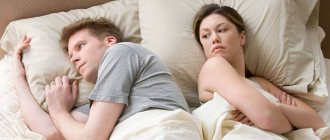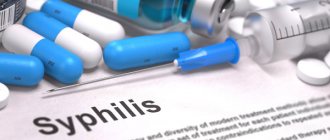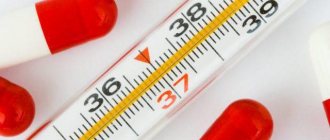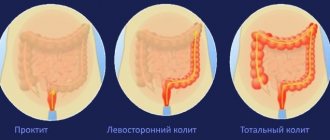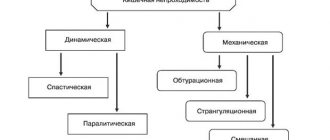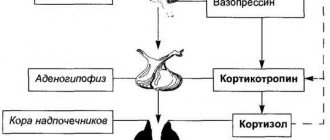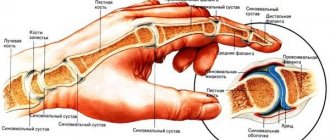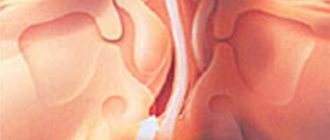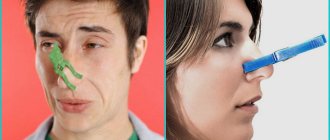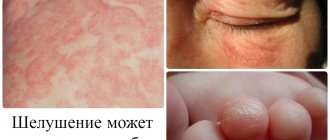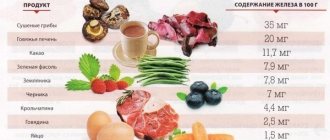Prurigo definition:
Prurigo (syn. prurigo) is a chronic recurrent polyetiological disease from the group of neuroallergodermatoses, the primary morphological elements of which are papulovesicles, urticarial papules, hemispherical papular and nodular elements, the appearance of which is accompanied by severe itching.
Etiology and epidemiology
In the development of the disease in childhood, provoking factors are sensitization to food, medicinal, household allergens, insect bites (mosquitoes, ticks, bedbugs, fleas), as well as digestive disorders (including congenital enzymopathies), helminthic and parasitic infestations, autointoxication, preventive vaccinations, foci of infection.
In adults, the main importance is given to the effects of endogenous allergens resulting from chronic gastrointestinal (functional dyspepsia, irritable bowel syndrome, peptic ulcer of the stomach and duodenum, hepatitis, cholecystitis, cirrhosis of the liver), endocrine disorders (diabetes mellitus, thyrotoxicosis, dysmenorrhea, ovarian cysts ), as well as various intoxications, nutritional, vegetative-vascular disorders, helminthiases, diseases of the nervous system and autoimmune processes. Prurigo in adults can be a manifestation of a nonspecific reaction that develops against the background of blood diseases (lymphogranulomatosis, lymphocytic leukemia), paraneoplastic processes, systemic diseases, pregnancy, photosensitivity, neuropsychic stress, insect bites.
How does it manifest in children?
Prurigo often affects a child’s body, which is weakened by other diseases of a non-allergic nature. These diseases include liver failure. As a result of poor liver function, toxins are not completely eliminated from the body, and intoxication of the body occurs, which is a favorable condition for the development of childhood pruritus.
The impetus for the development of strophulus can be given by helminthic infestation. Harmful substances that appear in a child’s body as a result of the vital activity of helminths can cause allergization and intoxication.
Some doctors believe that prurigo can be caused by the bites of flies, mosquitoes, or other insects.
The reasons that can provoke infant pruritus are:
- disturbances in the gastrointestinal tract or biliary tract;
- dysbacteriosis;
- neurological problems;
- diabetes;
- oncological neoplasms.
Clinical picture (symptoms) of pruritus:
Infantile prurigo (strophulus, infantile papular urticaria) begins to develop during the first year of a child's life, but the most pronounced manifestations of the disease are observed between the ages of 2 and 8 years. The primary morphological elements on the skin are blisters ranging in size from 2 to 10 mm, in the central part of which there is a nodule topped with a vesicle (seropapule). Against the background of intense itching, urticarial rashes first appear, in the center of which, against a swollen erythematous background, dense seropapules the size of a millet grain with a small bubble at the top are formed. The blister disappears after 6-12 hours. As a result of excoriation, the papules become infiltrated, and hemorrhagic crusts form in place of the vesicles. There are also independent seropapules, surrounded by a small rim of hyperemia, but without blisters at the base, as well as urticarial elements without papules and vesicles. Rashes and itching occur in paroxysms and are localized symmetrically on the skin of the extensor surfaces of the limbs, torso, buttocks, palms and soles, and less often on the skin of the face and scalp. During an attack of rashes, intense itching is noted, especially in the evening and at night, which leads to sleep disturbances and irritability. Sometimes there is a short-term increase in body temperature to 37.5-38ºС, changes in the clinical blood test (eosinophilia, anemia, possibly lymphocytosis, increased ESR), polyadenopathy.
Children's prurigo
Prurigo of adults (prurigo simplex Hebra) can manifest itself in two forms: acute and chronic.
The acute form of the disease is characterized by the appearance on the skin of the extensor surfaces of the upper and lower extremities, less often the trunk, of disseminated hemispherical papules of dense consistency, the size of lentils, not prone to fusion, of a reddish-brown color, which, due to edema, can become urticarial in nature (edematous papules) on background of intense itching. As a result of excoriation, their surface becomes covered with hemorrhagic crusts, which, when rejected, leave temporary pigmentation or whitish scars. The rash is preceded by minor disturbances in the general condition for 1-2 days. The acute form of the disease can last from 2 weeks to 4 months. Due to painful itching, patients experience neurotic disorders: irritability, insomnia.
acute form
The chronic form of the disease is characterized by a long, relapsing course and the appearance of foci of lichenification along with papular rashes. In persons with increased sensitivity to ultraviolet rays, exacerbations are often seasonal (spring or summer forms of prurigo) and are characterized by localization of rashes on exposed skin areas.
chronic form
Nodular prurigo (urticaria papular persistent, nodular prurigo Hyde) is rare, mainly in women over 40 years of age. It is characterized by the presence of monomorphic rashes, represented by isolated large (0.5 to 1 cm or more in diameter), hemispherical or round dense papules and nodules, sharply protruding above the skin level. The elements initially have the color of normal skin, then become reddish-brown. The surface of the elements is smooth, then scales or hyperkeratotic and verrucous lesions may appear on the surface. As a result of intense paroxysmal itching, excoriations appear on them, covered with hemorrhagic crusts. Resolution of pathological elements often occurs through ulceration and scarring. The rashes are localized symmetrically on the skin of the extensor surfaces of the upper and lower extremities, less often on the flexor surfaces and back.
Nodular prurigo
The disease is accompanied by intense, biopsy-like, paroxysmal itching, which intensifies after the onset of rashes, which is explained by hyperplasia of nerve fibers in the affected areas of the skin. The disease lasts for years and is accompanied by short remissions.
Causes of the disease
Strophulus in children appears as a result of increased sensitivity of the body to certain types of foods. Allergies to food may begin to appear during the period of introducing complementary feeding to the baby. The disease can be caused by nuts, raspberries, fish, chicken, citrus fruits, and any foods containing protein. In children during breastfeeding, an allergic reaction can be triggered by a protein that enters the child's body along with mother's milk.
This disease may begin to develop against the background of diathesis or similar pathologies, the presence of which indicates the child’s tendency to allergic reactions. This tendency can be hereditary and transmitted at the genetic level.
Chicken meat and citrus fruits often provoke allergies
Diagnosis of prurigo (prurigo)
Diagnosis is based on medical history and clinical picture of the disease. According to indications and for the purpose of differential diagnosis, the following laboratory tests are prescribed:
- clinical blood and urine tests;
- biochemical blood test: total protein, total bilirubin, ALT, AST, alkaline phosphatase, creatinine, urea, glucose;
- stool analysis for worm eggs;
- serological diagnosis of parasitic diseases - detection of antibodies to antigens of Giardia, Ascaris, Opisthorchis, etc.
- examination for HIV infection (determination of IgM and IgG - antibodies to HIV1, HIV2) and hepatitis B and C (determination of HCV antibodies, HBs antigen);
- histological examination of skin biopsies;
- microscopic examination of skin scrapings for scabies mites;
- determination of serum allergen-specific antibodies (food, household, pollen, epidermal, to drugs, insect bites).
According to indications, consultations with other specialists are prescribed: gastroenterologist, neurologist, endocrinologist, otolaryngologist, gynecologist, oncologist, physiotherapist.
Differential diagnosis
It is carried out with insect bites, scabies, pediculosis, thixicoderma, neurodermatitis, allergic dermatitis, eczema, persistent papular urticaria, chicken pox, Dühring's dermatitis herpetiformis, vasculitis.
chicken pox
Prevention
In order to protect a child from prurigo, it is necessary to exclude from his environment all sorts of factors that provoke this disease:
- It is necessary to take the child for a medical examination on time, and if he has any diseases, treat them in time to avoid relapses.
- It is necessary to exclude allergens from the baby’s diet that can enter his body along with complementary foods or breast milk.
- If a child who already eats independently is susceptible to infantile pruritus, you should not only remove allergens from his diet, but also explain what he can eat and what he cannot.
It is necessary to monitor the child’s psychological state and protect him from stressful situations.
Treatment of prurigo
Goal of treatment
- stopping the progression of the disease;
- reduction of itching;
- regression of rashes.
General notes on therapy
Second generation antihistamines are the first choice drug therapy. If necessary, if sedation can be beneficial, first generation antihistamines are used.
In case of persistent disease, systemic glucocorticosteroid drugs are used.
In external therapy, solutions of aniline dyes (methylene blue, fucorcin, brilliant green), topical glucocortisteroid preparations are used
Indications for hospitalization
None
Prurigo treatment regimens:
Drug therapy
Systemic therapy
Antihistamines
- dimethindene maleate
- loratadine
- desloratadine
- fexofenadine hydrochloride
- levocetirizine
- cetirizine hydrochloride
- chloropyramine hydrochloride
- chloropyramine hydrochloride
- diphenhydramine hydrochloride
- diphenhydramine hydrochloride
- clemastine fumarate
- clemastine fumarate
- quifenadine hydrochloride
- ebastine
Tranquilizers
- hydroxyzine
Glucocorticosteroid drugs:
- prednisolone
- betamethasone
External therapy
Glucocorticosteroid drugs
- hydrocortisone acetate in the form of applications
- methylprednisolone aceponate in the form of applications
- flumethasone pivalate in the form of applications
- Alclomethasone dipropionate in the form of applications
- betamethasone dipropionate in the form of applications
- betamethasone valerate in the form of applications
- mometasone furoate in the form of applications
- hydrocortisone 17-butyrate in the form of applications
- triamcinolone acetonite in the form of applications
- fluticasone propionate in the form of applications
- fluocinolone acetonide in the form of applications
- clobetasol propionate in the form of applications
For nodular prurigo, intralesional injections of glucocorticosteroid drugs - hydrocortisone, triamcinolone, betamethasone dipropionate - are advisable.
Pastes, creams, ointments containing tar, ichthyol, naftalan (5-10% tar ointment, 2-5% naphthalan, 3-5% boron - 5-10% tar ointment, 5% ichthyol ointment) at night under an occlusive dressing.
Creams and ointments with antipruritic agents - menthol, anesthesin, diphenhydramine, fenistil.
Non-drug therapy
Physiotherapeutic treatment
- selective phototherapy 4-5 times a week for a course of 20-30 sessions
- PUVA therapy (B) 4 times a week for a course of 15-20 sessions (in severe cases with widespread itchy rashes).
Requirements for treatment results
- stopping itching;
- resolution of rashes.
Tactics in the absence of treatment effect
Consultations with other specialists, identification and treatment of somatic pathologies.
Prevention of pruritus
There are no methods of prevention.
IF YOU HAVE ANY QUESTIONS ABOUT THIS DISEASE, CONTACT DOCTOR DERMATOVENEROLOGIST KH.M. ADAEV:
EMAIL:
INSTAGRAM @DERMATOLOG_95
« Previous entry
About folk remedies
Various decoctions and baths are considered folk remedies, so it is better if you consult with a specialist before starting such actions. Let's look at some folk recipes in more detail:
- Baths with birch buds. The ratio to achieve is 200 grams of buds per 2 liters of water, left to boil for 2-3 minutes. Three hours after straining the broth, you can add it to the bath. Take this bath for no longer than 30 minutes.
- Starch baths are made from 50 grams of starch dissolved in water. The procedure should take even less time than the first one.
- Oak bark. To prepare the decoction, you will need to soak 3 tablespoons of dry bark in hot water (preferably in an enamel bowl) and leave for about half an hour. Add the strained broth and leave it for a while to the water. Can be used in the form of lotions and inside the body (for gastrointestinal problems) with the same recipe.
- A pumpkin-potato compress made from grated vegetables and their juice can help. Secure the compress with a gauze bandage and apply it daily, changing it every 3 hours.
- Chamomile infusions. Chamomile, filled with cold water, needs to be boiled for 10 minutes. For a full bath spend half a kilogram, for a half - a quarter, for a foot bath 100 grams is enough.
- A sulfur bath has a calming and anti-inflammatory effect on skin diseases. Concentrates can always be purchased in stores with appropriate instructions for use.
- Buckthorn bark. About 20 grams of dried and crushed bark are poured into two glasses of water. Next comes boiling (25–30 minutes). Take one tablespoon, cooled, before bedtime. It is a laxative and regulating natural remedy.
- Yarrow. Fresh leaves, safe and treated with boiling water, are applied to the desired area of the skin. For a bath you need 50 grams of herb mixed with two liters of water.
- Even burdock can be used as a pain reliever. A fresh leaf is placed on the skin for three hours. When creating an ointment, you need to add Vaseline to the mixture in an unequal ratio (in a dark container) and cover the itchy areas immediately after a bath with a decoction of oak bark.
- Wormwood is used in the form of a lotion (a glass of boiling water on a spoon and steeped for 2 hours) or juice (squeezed from fresh leaves and herbs) to eliminate pain. Take the juice 3 times a day along with honey, one tablespoon before meals.
All these methods will not give the ideal effect, but they will soothe and rejuvenate the skin and the body as a whole, and make you feel better.
Birch buds are added to bath water
